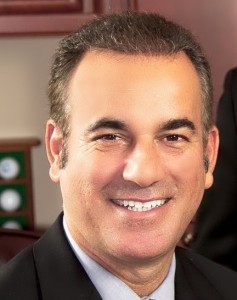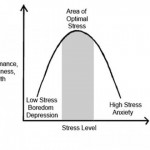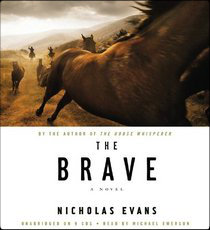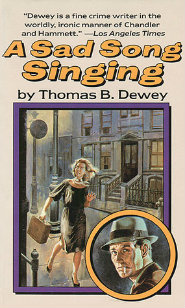

Dr. Shinitzky is one of the very first authors to be interviewed on our PaperBackSwap Blog. He has a new book out and has agreed to another interview! Thank you Dr. Shinitzky, and welcome back!
Your new book, Take Control of Your Anxiety: A Drug Free Approach to Living a Happy, Healthy Life, published last month, addresses an issue many people seem to suffer with, anxiety. Why this topic? Are anxiety disorders on the rise today?
You ask a great question, why did we (Drs. Shinitzky, Cortman and O’Connor) choose to write this book covering specifically this one topic, anxiety? If you think you are alone and the only one suffering from anxiety, it might be helpful to realize that anxiety has become the “Common Cold of Mental Health”. 18% of the adult US population satisfies the criteria for any one of the anxiety disorders. That’s approximately 40 million people. So, when someone says you are One-in-a-Million, you really are One-in-a-Group-of-40. Anxiety disorders are more commonly discussed today than ever before. The topic of anxiety has been on the front cover of major magazines, discussed on all television networks and due to the proliferation of social media anxiety has become a buzz word throughout society. The reality is that anxiety does not appear to be on the rise but we as a society have become more aware and willing to discuss, assess and seek treatment for a condition that previously went untreated and oftentimes disabled individuals. What is unique about our book, Take Control of Your Anxiety: A Drug-Free Approach to Living a Happy, Healthy Life we are not anti-medication, we have chosen to empower individuals by teaching a range of behavioral steps that they can use to help manage or resolve their stress or anxiety.
Is there a level of anxiety in everyone? Isnt some anxiety a normal reaction to everyday life?
When discussing the topic of anxiety it is vitally important to start by sharing the reality that everyone experiences “anxiety”. In actuality, the more accurate term would be “arousal”. As a species, we are built to handle arousal to our system. You wake and realize that you have a classroom presentation to give in one week. You question if you are prepared for a job interview. You have a competitive sporting event this weekend. You want to ask that person out. Whenever you perceive some stressor you tend to react. This natural reaction or arousal is actually healthy. It alerts you. It drives you to become active. As a matter of fact there is a simple yet elegant equation that explains anxiety, Investment + Perceived Threat (real or imagined) = Anxiety. If you don’t have a horse in this race, you won’t be too concern as to the outcome. Likewise, if you don’t perceive a threat to this invested situation, you don’t experience any arousal. There is a great way to describe the normal process of anxiety or arousal. Imagine a capital letter “U”. Now imagine the “U” upside-down. 
Several years ago, a concept was postulated by Yerkes-Dodson called the “Inverted-U” law. As your system perceives stress or arousal or anxiety, you become alerted and your performance actually rises. The left side of the inverted-U curve is healthy stress, also known as Eustress. As you awaken your system to address your life circumstance you ascend to your optimal performance levels. This is when you are attentive, applying yourself, committed, and as the athletes that I treat would say, they are in the “zone”. The problem exists when someone becomes too aroused at which point the curve reflects the Law of Diminishing Returns. The right side of the inverted-U curve is unhealthy, also known as Distress. In Take Control of Your Anxiety: A Drug-Free Approach to Living a Happy, Healthy Life we start by helping individuals realize that we all experience anxiety, that it is normal and that if managed properly can be very helpful towards achieving your goals.
How can someone tell if anxiety is controlling their life?
We encourage people to look at their anxiety based on three factors, Frequency, Duration and Intensity. As we mentioned earlier that anxiety is normal, we therefore have to consider these three factors as important towards discovering the extent and impact of anxiety in your life. The three factors can be posed as questions that you ask yourself. First, How often (frequency) do I experience this emotion? When I get anxious, how long does it last (duration)? Finally, when it happens, how extreme (intensity) is my anxiety? I had treated a young man who told me that he was a very health conscious individual which is why he chose to use the stairs rather than take the elevator. The problem was that my office is on the 24th Floor. By the time he got to my floor our scheduled appointment was over. Clearly, his fear of the elevator cable snapping and plummeting to his untimely death led him to avoid the elevator and create a logical explanation. Another gentleman that I treated would leave his house each morning, lock his front door, and walk to his car and then question if he had truly locked the front door. His intrusive thoughts and fears that someone would now have free access to his home and belongings led him to return to the front door and relock it. Again, upon entering his vehicle, he second guessed himself wondering if he had just unlocked a locked door, leaving all of his worldly possessions ripe for the picking. This pattern would occur between 20 and 25 times each morning. Can you imagine what the neighbors thought when they observed this repetitive behavior each and every morning. If your anxiety is interfering in your school responsibilities, social/interpersonal life, or vocation you may need to work with a respected professional.
Who should read this book?
Who is our book for? Humans. What, you want more than that as my answer? We have written this as a self-help book for the general public. We hope that we have penned a book that is both educational and entertaining, or as we like to say, “Edutainment”. Our goal is for anyone struggling with an issue of anxiety or if you know someone that is adversely affected by anxiety to read, Take Control of Your Anxiety: A Drug-Free Approach to Living a Happy, Healthy Life and learn steps towards addressing and resolving the angst in their life. We have divided the book into discussing the normalcy of anxiety, causes of anxiety, creative as well as comprehensive tools to address anxiety, and finally we covered the five most common anxiety disorders that we see in our clinical practices (e.g.; Phobias, Panic Disorder, Obsessive-Compulsive Disorder, Generalized Anxiety Disorder and Post-Traumatic Stress Disorder).
Chapter 3 begins: Bright lights, loud noises, the taste of rocky mountain oysters—there are but a few stimuli that are deemed to be universal stressor and consistently cause anxiety in humans. The rest are in your head. Is it all really just a matter of changing one’s view of things?
As Wayne Dwyer is oftentimes quoted, “If you change the way you look at things, the things you look at change.” Yes, it truly comes down to perception. Remember the equation, Investment + Perceived Threat (real or imagined) = Anxiety. I ask your readers to consider this concept. What makes me nervous may not make you worry and what makes you anxious may not make me stressed. Your feelings are statements of You. Not everyone reacts the same way to a situation. Some people love public speaking while others would rather have their non-dominant arm torn off. Your feelings are statements about your Perception of Reality, not about reality. A child who becomes fearful that someone is breaking into the house even though they know the branches from the tree rub against their window, still wants her mommy to stay with her until she falls asleep. (I’m wondering why the parents just don’t cut the branches back). Your emotions are reflecting upon your Investment. Three people watched the Super Bowl together. One jumped for joy as their team won. The second person cried with their head and their hands in defeat. The third person stared at the other two with a perplexed look wondering why two grown adults would be reacting so mightily to a game played by other people who could never hear their cheers as if their own lives depended on the outcome. It is a pleasure to help individuals realize that if they develop healthier, more adaptive coping skills that challenge their previous methods they can overcome their greatest fears and worries. The most common reaction that people display to an anxiety producing situation is avoidance. Once they avoid the stress inducing situation, their anxiety and worry decreases but only in the short-term. Avoidance never provides long-term resolution. A young lady that I treated was afraid of dogs. All dogs, even a baby Cocker Spaniel. She would avoid the beast by darting across the street. The short-lived relief by avoidance quickly vanished when out from a different store came a woman carrying a purse with a Tea Cup Chihuhua. Again, the holy terror of this vicious creature would elicit fear and avoidance. The only remaining option was to avoid the sidewalks and head to the middle of the street. When working with individuals who possess anxiety it is important to empower the person by understanding that your emotions are statements of You, Your Perception of Reality and Reflect your Investment.
After this awareness becomes solidified we then turn our focus on how this person is experiencing “anxiety”. Anxiety can occur in one of three forms; Physiological, Thoughts and Feelings. Some people only experience physical stress, tightness or changes in their heart rate and breathing. Some individuals have intrusive thoughts and negative self-talk. Lastly, other individuals might experience fears, worries and dread about the future events. You might have one or a combination of the three. Once we identify how someone is experiencing anxiety, an appropriate treatment plan can be created to address any of these three forms of distress.
This is your second book coauthored with Dr. Chris Cortman. What is next for you? Will you collaborate on another book together?
This has been a magnificent experience collaborating with Dr. Cortman again. In our current Anxiety book we also co-authored with Dr. Laurie-Ann O’Connor who offered exceptional insights into the realm of Mindfulness, Yoga and other forms of helpful coping skills for anxiety. Dr. Cortman and I have now converted our first book, Your Mind: An Owner’s Manual for a Better Life (Career Press, 2009) into an evidence-based youth prevention curriculum titled, The Social Black Belt (SBB). We wanted to share the 10 Truths from our first book to a young audience. We have now conducted two separate research studies to assess the impact of the SBB on the students’ Knowledge, Attitude and Behavior. Just like in the martial arts, when you attained your highest level of skill, you receive a black belt. When you possess a black belt you don’t go looking for trouble but when trouble presents itself, you can handle the situation. Through the Social Black Belt, we proactively provide a range of skills through this onsite, interactive, fun-filled prevention program to today’s students. Once they have attained their Social Black Belt, they don’t go looking for trouble but when trouble presents itself they can handle the situation. Students are more self-confident, possess greater assertiveness, set healthy personal boundaries and are able to set long-term and short-term goals. The SBB helps address bullying behaviors and fosters the development of pro-social behaviors. The SBB is now being replicated across the country. For more information on the Social Black Belt go to www.thesocialblackbelt.com.
Who is your favorite author? What book was your favorite when you were a child?
 My favorite book when I was a child was, Harold and the Purple Crayon. Guess what? My favorite color is purple and I still like to draw images and then entering into them for an exciting adventure.
My favorite book when I was a child was, Harold and the Purple Crayon. Guess what? My favorite color is purple and I still like to draw images and then entering into them for an exciting adventure.
Do you read self-help books?
Yes, I like reading self-help books. I believe that we all have room for improvement. A recent book that I read was, How to Practice: The Way to a Meaningful Life by the Dalai Lama.
Was there someone who influenced you when you were young to pursue psychology as a career?
When I was 15 years old a family member commented about my interpersonal style and how people turned to me with questions that I helped them to discover their answers. They informed me that there was a profession called, Psychology. I was introduced to 5 different Psychologists with different sub-specialties which I found extremely interesting. So, I declared my major at 15 years old. My high school Psychology teacher, Mr. Albiani was an incredible individual and mentor for better understanding the field of Psychology.
If you weren’t a psychologist, what would you be?
An artist or a tennis player.
Golf or hockey?
Golf
Skittles or M&Ms?
M&Ms. The more chocolate the better.
Beach or mountains?
Beach
Lady Gaga or Tony Bennett?
I’d pay to see Lady Bennett or Tony Gaga. I could see both.
To read more about Dr. Shinitzky you can visit his website: www.drshinitzky.com.
To read the first Author Interview Dr. Shinitzky did with us for the PaperBackSwap Blog click here:
Dr. Harold Shinitzky of Your Mind: An Owner’s Manual for a Better Life
 Dr. Shinitzky has generously offered 3 brand new copies of his book, Take Control of Your Anxiety: A Drug-Free Approach to Living a Happy, Healthy Life,
Dr. Shinitzky has generously offered 3 brand new copies of his book, Take Control of Your Anxiety: A Drug-Free Approach to Living a Happy, Healthy Life,
to 3 PaperBackSwap members who comment on this blog. The Winners will be chosen at random from the entries we receive.












